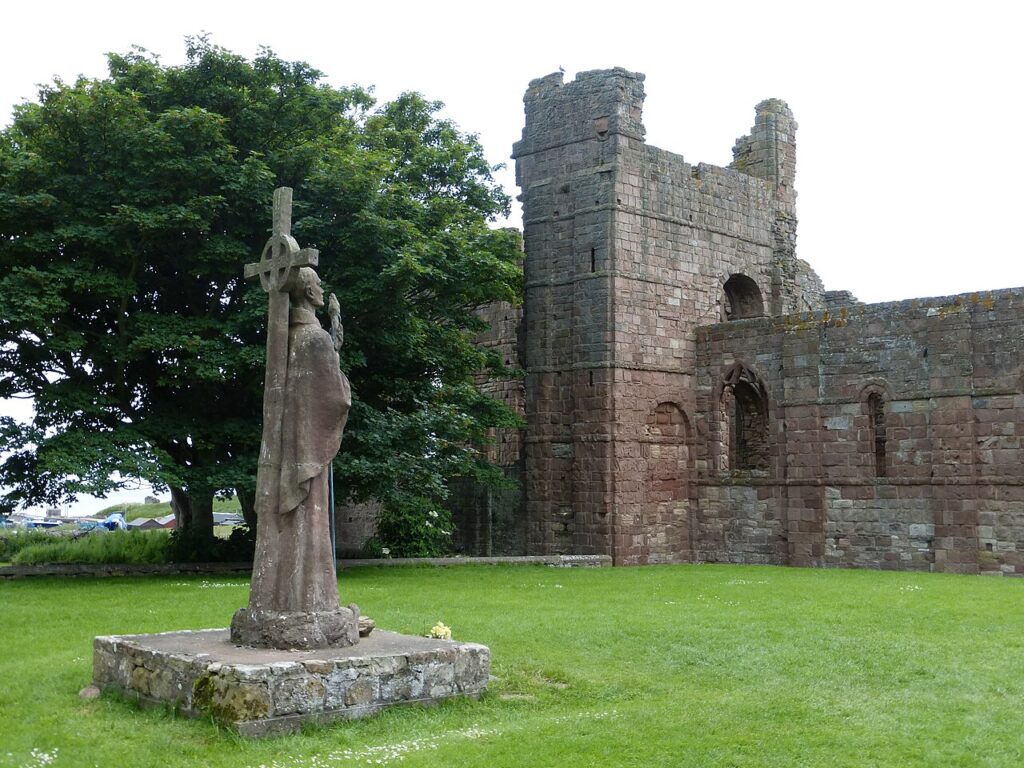Lindisfarne

Lindisfarne, also known as Holy Island, is a small tidal island off the northeastern coast of England, in Northumberland. Its history is deeply intertwined with the spread of Christianity in the British Isles, and it holds a prominent place in medieval religious history.
The history of Lindisfarne begins with its establishment as a monastic center in AD 635 by Saint Aidan, an Irish monk sent from Iona by King Oswald of Northumbria. Aidan chose the remote, serene island as the perfect location for a monastery, which quickly became a hub of Christian learning and missionary activity. The monastery’s location allowed for both seclusion and connection to the mainland, fostering a spiritual environment conducive to prayer, study, and the spread of Christianity.
The monastery flourished under Aidan and his successors, including Saint Cuthbert, who became one of the most revered figures in Lindisfarne’s history. Cuthbert served as the bishop of Lindisfarne from 685 until his death in 687 and was known for his piety, dedication to pastoral care, and miracle-working. After his death, Lindisfarne became a major pilgrimage site, with Cuthbert’s relics enshrined in the monastery.
Lindisfarne is perhaps most famously known for the Viking raid of 793, which marked the beginning of the Viking Age. The brutal attack on the monastery shocked the Christian world, as Lindisfarne was one of the most important religious centers in England. This raid was one of the earliest recorded Viking attacks in Western Europe, signaling the start of a period of Scandinavian expansion and conquest.
Despite the destruction caused by the Vikings, the monastic community of Lindisfarne persisted, although it eventually relocated to the mainland, taking Saint Cuthbert’s remains with them. Over time, the island’s importance as a religious center diminished, but it remained a place of pilgrimage.
In the centuries that followed, Lindisfarne saw the construction of Lindisfarne Castle in the 16th century, which served as a coastal defense for England. Today, Lindisfarne is a site of historical and spiritual significance, attracting visitors and pilgrims interested in its rich history and natural beauty. The island’s legacy is also preserved through the famous Lindisfarne Gospels, an illuminated manuscript created in the early 8th century, which is considered a masterpiece of medieval art.
